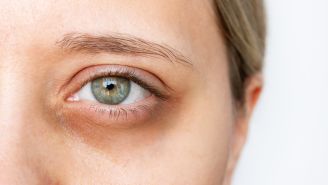From exercising outside for your physical health to getting a breath of fresh air for your mental health, you’ve heard all the benefits of the outdoors. But too many hours in the sun may actually be harmful to your vision as you get older.
A study suggests that how much time you spend outside and how far north you live influence your risk of developing an eye condition called exfoliation syndrome, or XFS. XFS is a type of “bad aging” of the eye and can be a gateway to the development of other conditions that cause vision loss, such as glaucoma and cataracts. It gets its name from the white or gray flakes—which can look like dandruff under a microscope—that build up in the eye. Experts don’t know what causes XFS, but have suspected that a person’s genes and environment are involved.
So researchers from Harvard Medical School and other institutions conducted a study in the United States and Israel. The study included 185 people who had XFS, and 178 people who didn’t have the eye condition. Researchers looked at the latitude where participants lived, as well as the average amount of time each participant spent outdoors.
The shady side of sunlight
In to the study, for every degree that someone lived away from the equator, their chances of developing XFS increased by 11%. And each hour per week spent outside during the summer was associated with a 4% higher risk for XFS.
Americans who worked near snow or water had an especially high risk of XFS. That suggests that reflected light may be even more damaging to the eyes. Of course, the study can’t prove that sunlight causes XFS, and more research is needed.
Easy tips to prevent XFS
The good news? You don’t have to give up on all the outdoors has to offer. You just have to be smart about protecting your eyes when you’re out. Here are two ways to keep your vision safer:
- Grab some shades. Choose a pair that blocks both UVA and UVB rays. Polarized lenses reduce reflected light and are a must for skiers and boaters. In the study, the more that people wore sunglasses outside during the brightest part of the day, the lower their risk of XFS was. While you’re at it, make sure your kids’ eyes are protected, too.
- Receive regular eye check-ups. Because XFS can lead to cataracts and glaucoma, it’s important to set up regular visits to your eye doctor, particularly if you’re over 40. That gives you the best chance of detecting eye problems early on, or even avoiding them.






